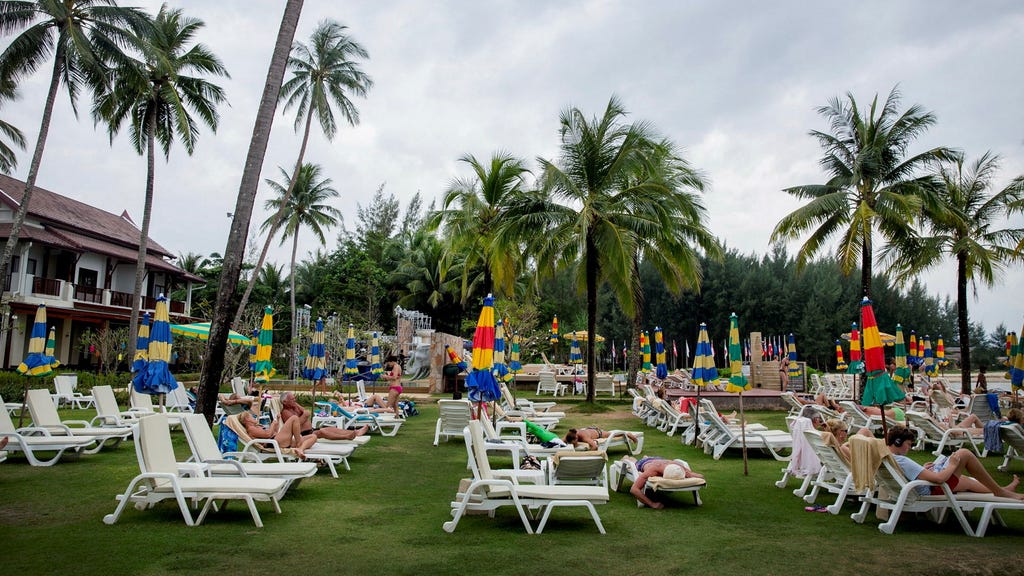The devastating tsunami of 2004, triggered by a massive earthquake off the coast of Sumatra, left an indelible scar on the shores of the Indian Ocean and in the hearts of those who survived. The tranquil morning of December 26th was shattered as the sea receded dramatically, leaving fish stranded on the exposed seabed, before a monstrous wall of water surged inland. Survivors recounted the terrifying experience of being tumbled like clothes in a dryer, swept away by the unforgiving force of nature. Khao Lak, a popular Thai holiday destination for Swedes celebrating Christmas, became a scene of chaos and despair. Frantic searches for missing loved ones ensued, with families torn apart and lives irrevocably altered. Outside the Phuket town hall, desperate individuals scanned lists of hospital admissions, missing persons, and the grim tally of the dead. The Christmas of 2004 became a tragedy of immense proportions for Sweden, with 543 of its citizens perishing in the disaster.
The aftermath of the tsunami was a harrowing testament to its destructive power. Fritidsresor’s Blue Village resort, a favorite among Swedish families, was reduced to rubble. Amidst the debris, poignant reminders of the lives lost lay scattered: Swedish passports, children’s shoes, and toys, silent witnesses to the abrupt end of holidays and lives. A car, swept up by the raging waters, rested precariously atop the reception building, a stark symbol of the tsunami’s raw power. Hospitals, overwhelmed by the sheer number of casualties, struggled to cope. Overcrowded and lacking air conditioning, many patients were forced to lie outside the buildings. Temple grounds became makeshift morgues, with rows of bodies, some shrouded, others still clad in their beach attire, a grim reminder of the suddenness of the tragedy.
Despite the profound loss and devastation, the resilience of the human spirit shone through. The Thai people, who themselves suffered immensely with over 8,500 fatalities, displayed remarkable strength and compassion. They selflessly aided survivors, providing food and medical assistance, even as they grieved their own losses and faced the destruction of their homes. This shared experience forged enduring bonds between Swedes and Thais. Stories emerged of remarkable acts of kindness, such as the tourist guide who saved a Swedish baby from the surging waters, becoming a lifelong figure in the child’s life. Many Swedish families, forever linked to Thailand by their loss, return year after year, finding solace and a sense of connection to their departed loved ones in the place where tragedy struck.
The tsunami’s impact extended far beyond Thailand, wreaking havoc across the Indian Ocean. Within 20 minutes of the earthquake, the wall of water reached Aceh province in Indonesia and the Andaman and Nicobar Islands. Over an hour later, it slammed into Thailand, eventually reaching Somalia in Africa after seven devastating hours. The disaster exposed the lack of an early warning system in the Indian Ocean, leaving populations vulnerable to the sudden onslaught. The catastrophe spurred international action, leading to the development of a sophisticated network of monitoring stations, deep-sea buoys, warning towers, and evacuation routes. While no system can offer complete protection, these measures significantly increase the chances of timely evacuation in the event of another tsunami.
Twenty years after the tsunami, Khao Lak has been rebuilt and reclaimed its place as a popular tourist destination. New hotels stand where once there was devastation, catering once again to vacationers seeking sun and relaxation. On the site of the former Blue Village, a new resort offers similar amenities, including yoga classes and children’s activities, echoing the carefree atmosphere that once prevailed. The temples, once filled with the grim presence of the dead, have returned to their role as serene sanctuaries. While the physical scars of the disaster may have faded, the memories remain, a somber reminder of the power of nature and the resilience of the human spirit.
The 20th anniversary of the tsunami serves as a moment for reflection and remembrance. Memorial services and religious ceremonies will be held in the affected countries, honouring the lives lost and acknowledging the enduring impact of the disaster. The tsunami of 2004 left an indelible mark on the world, prompting not only improvements in disaster preparedness but also highlighting the importance of international cooperation and the enduring strength of the human spirit in the face of unimaginable tragedy. The story of the 2004 tsunami is not just a tale of devastation; it is also a testament to resilience, compassion, and the enduring bonds forged in the face of shared adversity.














